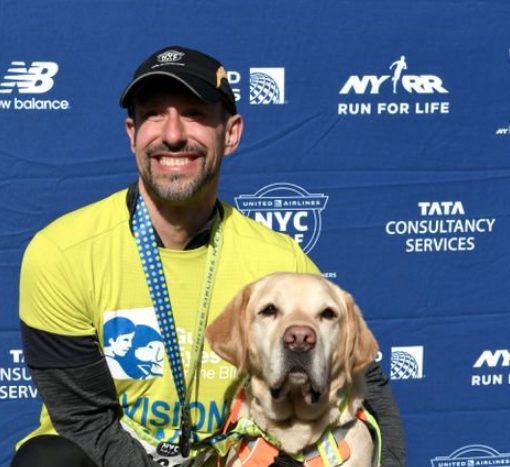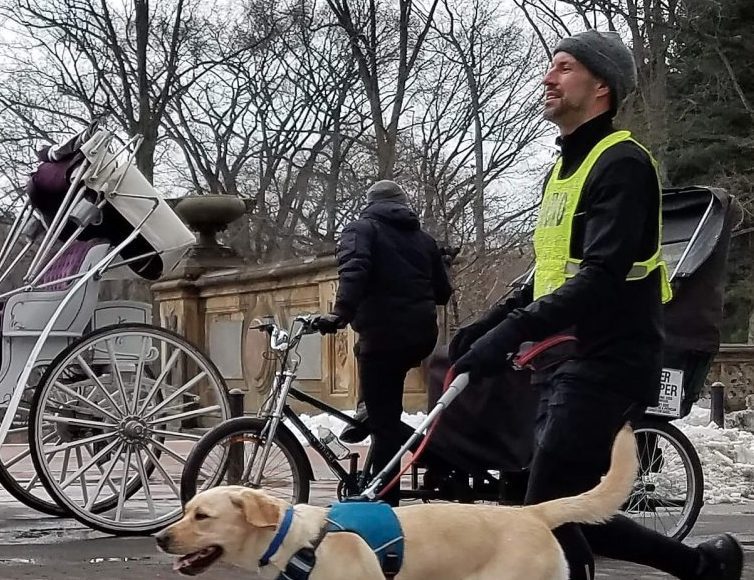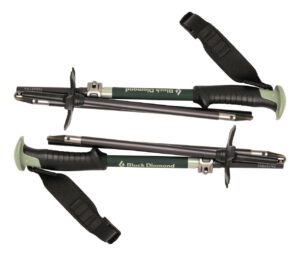App guides blind runner through solo 5K in Central Park
Thomas Panek and a team at Google Research have created an app to help blind athletes run independently
 Photo by:
Twitter/GuidingEyes
Photo by:
Twitter/GuidingEyes
On Thursday, Thomas Panek, who is blind, ran a 5K in New York City‘s Central Park as part of the NYRR‘s Run for Thanks virtual race. Panek ran all on his own. No guide dog, no partner, just him and his phone, using a new app that kept him on course throughout the entire run. Working with Google Research, Panek helped create this app, which uses his phone’s camera to monitor the route in front of him, alerting him whenever it’s time to turn. The app is not yet available to the public, but the team from what Google calls Project Guideline has said they hope to release it soon.
“Can technology help a blind runner navigate?” That’s what Thomas Panek, CEO of @GuidingEyes, asked during a 2019 hackathon. He worked with Google Research to create Project Guideline, which helps people run independently using machine learning → https://t.co/JujxIAt6y0 pic.twitter.com/YkW14V83nw
— Google (@Google) November 19, 2020
Running blind
In a post on The Keyword, Google’s official blog site, Panek writes about his journey building toward Project Guideline. He always loved running, he says, but his vision impairment got in the way. He started to lose his vision when he was eight, and by 20, he was legally blind. As Panek explains in a video from Al Jazeera, despite loving the sport, he quit after running into a post during the Chicago Marathon, which he ran when he still had partial vision. “I said, ‘That’s it, I’m not running anymore.'”
RELATED: Blind runner first to complete NYC Half with guide dogs
As so many early-life runners do, Panek eventually found his way back to running. “I heard about running with human guides,” he writes, “and I decided to give it a try.” With the help of guides, he qualified for the New York City and Boston marathons five straight years, but he still felt he wanted more independence. In 2019, he took a step toward racing solo, leaving his human guides behind and running with a dog instead. Later that year, he completed the NYC Half with a set of three guide dogs (which took turns guiding Panek), becoming the first person to do so.

Knowing how liberating it can be to run with a guide dog, Panek is the CEO of an organization called Guiding Eyes for the Blind, which works to pair visually impaired people with guide dogs. But there was still one problem, in Panek’s opinion: “there are millions more people with vision loss than there are available guide dogs,” he writes. “So I started asking a question: ‘Would it be possible to help guide a blind runner, independently?'”
RELATED: These are the guide dogs named after the 2017 Boston Marathon winners
Project Guideline
Panek posed this question at a Google hackathon last year. He says he didn’t expect much, but within a few hours, programmers had designed a demo that used his phone and tracked a line taped on the floor to guide him. From there, the team continued to develop the app, officially titling the work Project Guideline, and after several tests with Panek, the app can now guide him outdoors, as he proved on Thursday.
When running, Panek wears his phone on a belt so the camera can see where he’s headed. For his NYRR virtual run, a temporary line was painted throughout the park, which the app followed. If he drifted too far to either side, he heard an alert in his headphones that continued to sound until he was back on the right track. “I can hear the line in my ear,” he said in the post-run video. “It’s like a beacon, like a lighthouse.”
“I can hear the line in my ear, it’s like a beacon, like a lighthouse.”
This blind runner worked with Google to develop an app that lets him run without the help of humans or guide dogs ? pic.twitter.com/OihL20O7Qp
— Al Jazeera English (@AJEnglish) November 20, 2020
Panek ended up posting a great time for the virtual race, running sub-25 minutes for the 5K, but the result was secondary to the success of the app.
“It’s a real feeling of not only freedom and independence, but also you get that sense that you’re just like anybody else,” he said. “We all want to fit in, we all want to be just like anybody else. And today, just being out there with other runners in Central Park … it was just a feeling of belonging.”
RELATED: How the RunGo app is revolutionizing running in an increasingly virtual world


